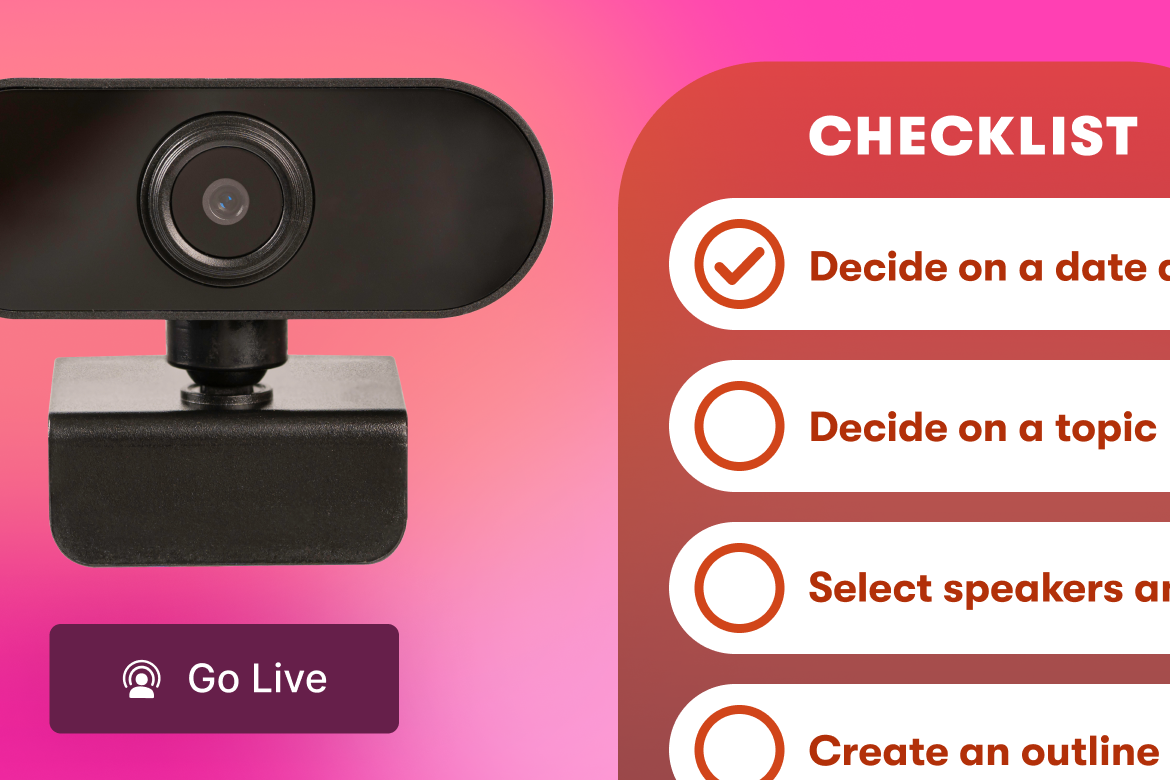Top 10 Most Common Video Mistakes to Avoid
June 24, 2020
Topic tags
All too often, marketers and creatives end up making videos for their businesses that don’t engage their audience or make them want to know more about their brand.
You might be wondering, how does this happen? We’ll be honest with you, there’s no magic trick or marketing hack for making a successful brand video. But, we can tell you some common mistakes people make when producing videos for their company to help steer you in the right direction.
Read on to learn more about the video creation blunders you should avoid and how you can build up your creative muscle to start making better videos for your business.
Pre-production and video planning mistakes
Before you start producing your marketing videos, it’s important to get in the right frame of mind. What are the goals of the video? Where is the video going to be used? What is the best type of video to communicate your message? These are all important things to consider before pressing play. Here are a few mistakes to avoid in the video planning and pre-production process.
1. Not using a script — planning makes perfect
One of the most common video mistakes we see is marketers and producers not using a formal script. Don’t let the thought of writing a professional video script scare you — simply putting pen to paper (er, fingers to keyboard) is a great way to organize your thoughts and form a cohesive story. Be sure to show your script to other team members and to read it out loud before filming. You’d be surprised at how unnatural some written words or phrases can sound versus a more casual and conversational tone.
2. Setting the wrong tone — align with your brand
Knowing your brand values and the product or service you’re showcasing is extremely important for coming up with the concept for your video. From wardrobes and background music to scripting and lighting, these elements can all impact how your audience will feel after watching your content.
For example, if your product is a fun social app, make sure your video matches the fun and social aspect of your brand. You wouldn’t want to mistakenly use a somber tone and solitary voice-over in your video because it wouldn’t align with the essence of your product. If the style of the video doesn’t match your overall brand, you could easily confuse your viewers.
3. Assuming your audience will care — give them a reason
Another mistake you can make as a creator is believing your audience will be equally as fascinated by watching your video as your friends, family, and coworkers. The support of your closest cheerleaders is important, but you can’t assume your brand’s audience will instantly love your video and share it with their networks. Truth be told, your audience will only care about your video if it is useful or entertaining to them.
“Truth be told, your audience will only care about your video if it is useful or entertaining to them.”
To be useful, create a video idea around how your product’s features could help someone solve a problem or the benefits it provides. For example, we’ve built a robust library of video production content to help creators and marketers get started with video.
To be entertaining, there are an infinite amount of ways you can delight your audience while injecting a little brand flair into your videos. Think about ways to hook your viewers within the first few seconds or ways you can get them super excited about what you have to offer.
For some inspiration, check out this video our sales team made that has continuously proven to delight people:
In an effort to make a video that will connect and resonate with your audience, you should take a walk in their shoes and ask yourself: Would this video be interesting to someone who’s not already invested in the subject matter or familiar with my brand? These considerations could make all the difference in deciding which route to take so you can make a solid first impression.
4. Not using examples — tell a story
One of the best things about video is that it gives people the opportunity to tell stories about their products or ideas without losing any of the information they want to get across. That’s why you should consider using examples or storytelling in your content. Not only do examples and stories make videos more interesting, but they also make content easier to follow and understand.
Case studies and customer testimonials are fantastic ways to tell stories authentically. By asking the right questions, you can clearly highlight the specific ways your product or service has helped your customers. With this format, your audience can hear how your product might be able to solve their problems, too. Additionally, customer testimonials add credibility. If a viewer recognizes the company who uses your product, they might be more inclined to choose you over a competitor.
“Case studies and customer testimonials are fantastic ways to tell stories authentically. By asking the right questions, you can clearly highlight the specific ways your product or service has helped your customers.”
If you want to create a storyline from scratch, that’s a completely viable option as well. We’ve done that for Wistia Channels, our feature that turns your video collection into a binge-watchable format that encourages viewers to spend more time with your brand.
For the product video, our production team landed on a silly idea for it to take place in a guitar shop. Throughout the video, the guitar shop proprietor walks you through how he uses Channels to showcase all of his content, while also illuminating the greatest features Channels has to offer. Take a look at the video for some storytelling inspiration:
5. Thinking inside the frame — get creative!
Whether your business offers a physical product or a service, video is a great way to introduce your brand to the world! Video can be a valuable tool to help answer people’s questions and pique their interests. However, many companies fall into a similar mindset when making introductory and demo videos. We believe these types of videos don’t have to be boring.
To show off or announce a new product, your video doesn’t have to consist of someone demonstrating an in-app walkthrough or a hands-on how-to (though those are great places to start). In fact, it can even be entertaining! That’s where thinking outside the box comes into play instead of thinking inside the frame. You could film a fake game show about your product, record a catchy jingle about its features, or cook up an interesting narrative centered around how people actually use your product in action.
No matter what type of video you make, try to move away from the norms of its genre. If you stretch your creative legs a little, your video will be more interesting and memorable. Only by somehow defying what’s usually done can your video rise above the average.
For some inspiration, check out a video we made celebrating the launch of Wistia for Chrome:
Video production and execution mistakes
Now that you’ve considered the purpose and tone for your video and have a creative idea in mind, it’s time to follow through with your plans.
Here are some production mistakes that often occur during the execution stage and a few tactical tips that’ll help you craft a high-quality video without a full-scale production crew.
6. Bad lighting — look critically at your shot
Is your lighting looking dull or shadowy? To get great lighting for your video, you don’t need expensive or professional-grade equipment. The best light to use for a shot is often the most convenient! Effective lighting for your video is all a matter of taste and being able to look critically at your shot to indicate the areas that could use some supplemental lighting.
“To get great lighting for your video, you don’t need expensive or professional-grade equipment. The best light to use for a shot is often the most convenient!”
Our Head of Production, Chris Lavigne, has created a super helpful guide for a technique he dubbed “Lighting on the Fly” that covers techniques for ambient light, light setup, light source, and color temperature as well as equipment you can purchase. And if you’re working with a smaller budget, our “Down and Dirty Lighting Kit” is an attainable and repeatable setup that will keep people on camera looking sharp and well-lit for under $100. While this kit isn’t the end-all be-all for lighting in every video, it’s one way to start developing your lighting instincts!
7. Poor sound quality — make sure your message is crystal clear
Audio also plays a major role in the way viewers experience your video. If people can’t understand your message, it can lead to poor engagement and a negative overall experience.
There are three main variables you should consider when recording sound for your video: the environment you’re recording in, how far your microphone is from the sound source, and what kind of microphone you are using.
We’ve created a guide all about recording audio for business video that covers choosing a microphone, setting the gain, essential audio gear, and how to record video with a DSLR camera.
Additionally, if you’re experiencing “roomy” or “echoey” audio in your videos, we have a post that’ll help you improve your audio quality with tips for getting your sound as natural and clear as possible.
8. Shaky footage — stabilize for a professional look
Have you ever felt sea-sick watching a video? Shaky footage can be hard to overlook. Even though a lot of cameras and rigs have built-in stabilization, shaky footage still rears its ugly head from time to time. Luckily, this is something you might be able to fix in post-production — but we’ve compiled our best tips for shooting stable handheld video footage for when you’re on set to save some extra time. If it’s just you and your camera, you can use your body or elements of your environment to capture steady shots. We highlight some handy tricks that we like to use in this post.
For shooting folks speaking on screen, we highly recommend using a tripod instead of going stand-free. Of course, there are a myriad of other instances where a tripod is a must-have like capturing time-lapses, close-up shots, and especially for shooting video by yourself. The main takeaway here is that it doesn’t hurt to have stabilization gear at the ready!
And, if you’re trying to vary up your shots, we know three ways for shooting overhead video. Here’s a video that’ll teach you how to use a tripod, a boom pole, or a mirror to capture an impressive shot from above!
9. Not using a call to action — tell your audience what to do next
Although you might’ve created a beautiful video that’s getting a ton of views, you might not be driving the conversions you were expecting. That’s why incorporating a call to action in your video can help you tell your audience what you want them to do next!
Incorporating a call to action in your script is one way to drop a hint, but you can also do so in post-production with illustrations and graphics. If you use Wistia, you can simply customize your video with Calls to Action and other conversion tools throughout your content to create opportunities for deeper engagement, make the video experience easier and more enjoyable, and collect all kinds of interesting data.
10. Not customizing the video to match your brand — bring it all together
Lastly, if you want to familiarize people with your brand, you should bring elements of your branding into your video. Whether that’s with design in post-production or in another creative way, customizing your video to match your brand can tie everything together.
With Wistia, you can also easily customize the player color to match colors in your brand guidelines and make it look snazzy on your site! We think it’s a pretty neat feature if we do say so ourselves.
Steer clear of these common video mistakes
Now that you know some common mistakes people make, we hope you feel more confident about going into the creative process. Video offers amazing opportunities to catch people’s interest with something educational, entertaining, and even artistic.
Making a great video can ensure your audience’s first exposure to your product or idea is a memorable and positive experience. But, if the video falls flat in some aspect, it can have the opposite effect. So, avoid making these common mistakes and start getting more creative with your business videos to effectively engage your audience!






